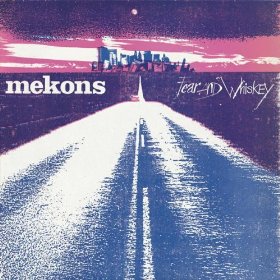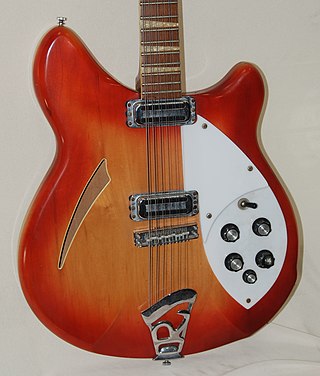Indie rock is a subgenre of rock music that originated in the United Kingdom, United States and New Zealand in the early to mid-1980s. Although the term was originally used to describe rock music released through independent record labels, by the 1990s it became more widely associated with the music such bands produced.
Alternative rock is a category of rock music that evolved from the independent music underground of the 1970s. Alternative rock acts achieved mainstream success in the 1990s with the likes of the grunge, shoegaze, and Britpop subgenres in the United States and United Kingdom, respectively. During this period, many record labels were looking for "alternatives", as many corporate rock, hard rock, and glam metal acts from the 1980s were beginning to grow stale throughout the music industry. The emergence of Generation X as a cultural force in the 1990s also contributed greatly to the rise of alternative rock.
College rock is rock music that played on student-run university and college campus radio stations located in the United States and Canada in the 1980s and 1990s. The stations' playlists were often created by students who avoided the mainstream rock played on commercial radio stations.

K Records is an independent record label in Olympia, Washington founded in 1982. Artists on the label included early releases by Beck, Modest Mouse and Built to Spill. The record label has been called "key to the development of independent music" since the 1980s.
The Dunedin sound was a musical and cultural movement in Dunedin, Otago, in the early 1980s. It helped found indie rock as a genre. The scene is associated with Flying Nun Records an independent label.
Middle of the road is a commercial radio format and popular music genre. Music associated with this term is strongly melodic and uses techniques of vocal harmony and light orchestral arrangements. The format was eventually rebranded as soft adult contemporary.

Fear and Whiskey is the fourth studio album by English rock band the Mekons. It was released in 1985 and marked a dramatic shift in their sound following a short hiatus. It has been credited as being one of the first alternative country albums, as it blends the band's previously-established punk rock style with a country music sound. Due to the limited production and distribution capabilities of parent label Sin Records, the initial album release was met with only modest commercial success but with broad critical praise. It remained largely unavailable until it was re-released in 2002 by Quarterstick Records, a subsidiary of Touch and Go Records.

Lo-fi is a music or production quality in which elements usually regarded as imperfections in the context of a recording or performance are present, sometimes as a deliberate choice. The standards of sound quality (fidelity) and music production have evolved over the decades, meaning that some older examples of lo-fi may not have been originally recognized as such. Lo-fi began to be recognized as a style of popular music in the 1990s, when it became alternately referred to as DIY music. Some subsets of lo-fi music have become popular for their perceived nostalgic and/or relaxing qualities, which originate from the imperfections that define the genre.

Repercussion is the second studio album by American power pop band the dB's, released in 1981 by Albion Records. Like its predecessor, Stands for Decibels, the album was commercially unsuccessful but critically acclaimed.

"If You Leave" is a 1986 song by English electronic band Orchestral Manoeuvres in the Dark (OMD). It was recorded for the soundtrack to the film Pretty in Pink (1986), in which it is played prominently during the final scene. Along with 1980's "Enola Gay", the track has been described as OMD's signature song.

Exit is the studio album by Shugo Tokumaru. It was originally released via P-Vine Records on October 19, 2007 in Japan. It peaked at number 239 on the Oricon Albums Chart.
New pop is a loosely defined British-centric pop music movement consisting of ambitious, DIY-minded artists who achieved commercial success in the early 1980s through sources such as MTV. Rooted in the post-punk movement of the late 1970s, the movement spanned a wide variety of styles and artists, including acts such as Orange Juice, the Human League, and ABC. The term "rockist", a pejorative against people who shunned this type of music, coincided with and was associated with new pop.
Post-punk is a broad genre of music that emerged in 1977 in the wake of punk rock. Post-punk musicians departed from punk's traditional elements and raw simplicity, instead adopting a broader, more experimental approach that encompassed a variety of avant-garde sensibilities and non-rock influences. Inspired by punk's energy and do it yourself ethic but determined to break from rock cliches, artists experimented with styles like funk, electronic music, jazz, and dance music; the production techniques of dub and disco; and ideas from art and politics, including critical theory, modernist art, cinema and literature. These communities produced independent record labels, visual art, multimedia performances and fanzines.

Tim is the fourth studio album by American alternative rock band The Replacements. It was released in September 1985 on Sire Records. It was their first major label release and also the last album made by the original line-up of the band: guitarist Bob Stinson was kicked out of the band towards the end of 1986.
Classic alternative is a radio format focusing on alternative music from the late 1970s to early 1990s, with particular focus on the early days of MTV.
"Waiting Room" is a song by the American post-hardcore band Fugazi. The song was first released as the opening track to their debut EP, and was later compiled on their commercially successful 1989 compilation 13 Songs. Featuring stylistic influences from funk, hip-hop and reggae, the song typifies Fugazi's signature style of post-hardcore and would go on to become one of their most popular and widely covered songs despite never being released as a single.

For Sale: Live at Maxwell's 1986 is a 2017 live album by the American alternative rock band The Replacements. Recorded at the famous Maxwell's at the height of the band's commercial and creative arc, it is one of the few good recordings of their live performances. The band's only previous live album—1985's The Shit Hits the Fans—was a limited cassette tape release which features poor audio quality and several false starts and stops on songs. In 2007, bassist Tommy Stinson stated that "There are no good Replacements live recordings", in part due to a lack of high-quality recordings and in part due to the band's notoriously sloppy performances due to alcohol abuse. The album was produced by Bob Mehr, who wrote the 2016 biography of the band Trouble Boys: The True Story of the Replacements.

Jangle pop is a subgenre of pop rock or college rock that emphasizes jangly guitars and 1960s-style pop melodies.

New York Noise is a 2003 compilation album released by Soul Jazz Records. The music of the album compiles features the genre-bending music from New York City released during the late '70s and early '80s, ranging from no wave to mutant disco to hip-hop to art funk among others. On its release, it received positive reviews from AllMusic, Pitchfork Media and Rolling Stone. A new version of the album with several track re-arrangements was released in 2016.
Left of the dial refers to the college and other non-commercial radio stations in the United States that broadcast from the reserved band of the FM spectrum. It can also refer to:










